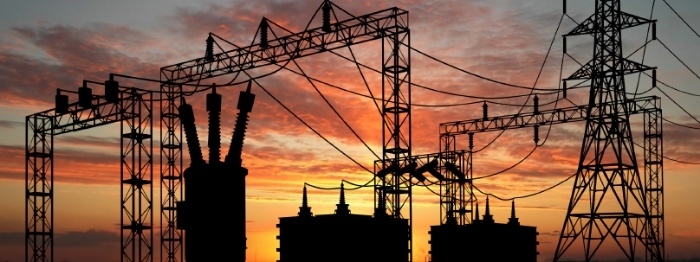This post is one in a series of feature stories on trends shaping advanced energy markets in the U.S. and around the world, drawn from Advanced Energy Now 2017 Market Report, which was prepared for AEE by Navigant Research.

Energy markets are evolving toward a greater reliance upon distributed energy resources, or DERs, whether those resources generate, store, or manage the use of electricity. Strategies to harvest more value from smaller, cleaner, and smarter energy resources are being deployed today. One such strategy is a virtual power plant (VPP), which through intelligent aggregation and optimization of DER can provide the same essential services as a traditional 24/7 centralized power plant.
Navigant Research defines a VPP as “a system that relies upon software and a smart grid to remotely and automatically dispatch retail DER services to a distribution or wholesale market via an aggregation and optimization platform.” Europe has experience with supply-side VPPs where a portfolio of diverse resources are orchestrated through smart grid technology to provide balancing services that would be provided by a conventional, steel-in-the ground, 24/7 coal, gas, or nuclear plant. Most of these VPPs are focused on variable renewable sources, though there are supply-side VPPs that aggregate and optimize diesel generation and other fossil assets. While in North America demand response (DR) can be considered a form of VPP, as reduction in demand is substituted for additional generation when called upon by grid operators. But the growing commercialization of energy storage – global revenue grew 45% globally in 2016, to $1.3 billion, and 54% in the United States, to $427 million – increasingly allows for combinations of supply- and demand-side resources working together, with energy storage bridging the gaps between them. These multi-dimensional VPPs promise the maximum benefit of their component advanced energy technologies – and have become realities in places like California, Hawaii, New York, Austria, Australia, and Ontario.
Energy storage is not a prerequisite to the creation of a VPP, but it acts like the glue that enhances the flexibility and the underlying value of other generation and load assets assembled in the VPP portfolio. The reason storage is so critical to flexibility is the speed of response time on shifting load up and down. Rather than merely providing a buffer to optimize DER, storage becomes a critical component of service delivery by providing, for example, bulk storage and load leveling services designed to reduce transmission and distribution losses.
Stem, an energy storage vendor with a portfolio of 580 sites representing 100 MWh of capacity and 70 MWhs of stored energy, is involved in two projects with Hawaiian Electric that combine to act as a VPP. The company delivered a 1 MW mixed-asset VPP designed to demonstrate the reliability and scaling potential of software-driven storage to provide grid stability and efficiency that will help Hawaii reach its goal of 100% renewable energy by 2045. Working in partnership with Hawaiian Electric, 29 commercial and institutional customers across the island of Oahu will rely on Stem’s behind-the-meter energy storage software and power monitors to manage their energy use against predictive load needs and utility tariff data to boost efficiency and control loads. Stem aggregates these storage devices and makes excess capacity available to Hawaiian Electric grid operators, with responses in real times. Stem collects and transmits that cloud-based data along with the data from 300 other locations with data-only capability to Hawaiian Electric to integrate into their renewable energy monitoring forecasting.
Ultimately, energy storage-enabled VPPs let a utility add the capacity of a power plant to its system without investing in a new physical plant. The capital costs are shared with end users and the benefits are accrued by both the end customer and the utility. VPPs can stretch supplies from existing generators and utility demand reduction programs (and other forms of DER). According to Navigant Research, global spending on energy storage devices for VPPs will reach $12 billion annually by 2025.
Currently, the most prevalent storage technologies for VPP-based ancillary services are lithium-ion batteries and flywheels. The most versatile of storage technologies utilized in VPPs today are Li-ion batteries, which are capable of delivering support services at the centralized grid, substation, and generation levels. Li-ion batteries can also be deployed for community energy storage – a new application directly affecting both VPPs and microgrids – and be installed to firm up large-scale and distributed variable renewable resources. Flywheels are less versatile, but have extremely long lifespans (i.e., the number of times they can be charged and discharged before the unit breaks down) and can provide grid regulation services instantaneously.
Manufacture of storage-sized Li-ion batteries has long been dominated by Asian companies, but the United States made its mark in late 2016 with the arrival of one of the world’s largest factories. Tesla Motors, which added powerful energy storage systems to its suite of energy solutions in 2015, recently started production in a Nevada-based Gigafactory. The massive production facility, located just outside of Reno, makes batteries for Tesla’s energy storage arm in addition to batteries for the company's much-anticipated Model 3 electric car. At this facility, Tesla expects to double the world’s production of Li-ion batteries, according to Bloomberg News – providing a lot “glue” for the world’s VPPs.
Energy storage-enabled VPPs pose significant potential for integrating supply and demand side resources, while still enhancing grid service capabilities – without needing to invest in new physical power plants. Indeed, VPPs provide another tool for utilities as the grid becomes more flexible, resilient, and cleaner.
Find out more about this year's advanced energy trends and the full size of the advanced energy market by downloading Advanced Energy Now 2017 Market Report, available for free at the link below:
